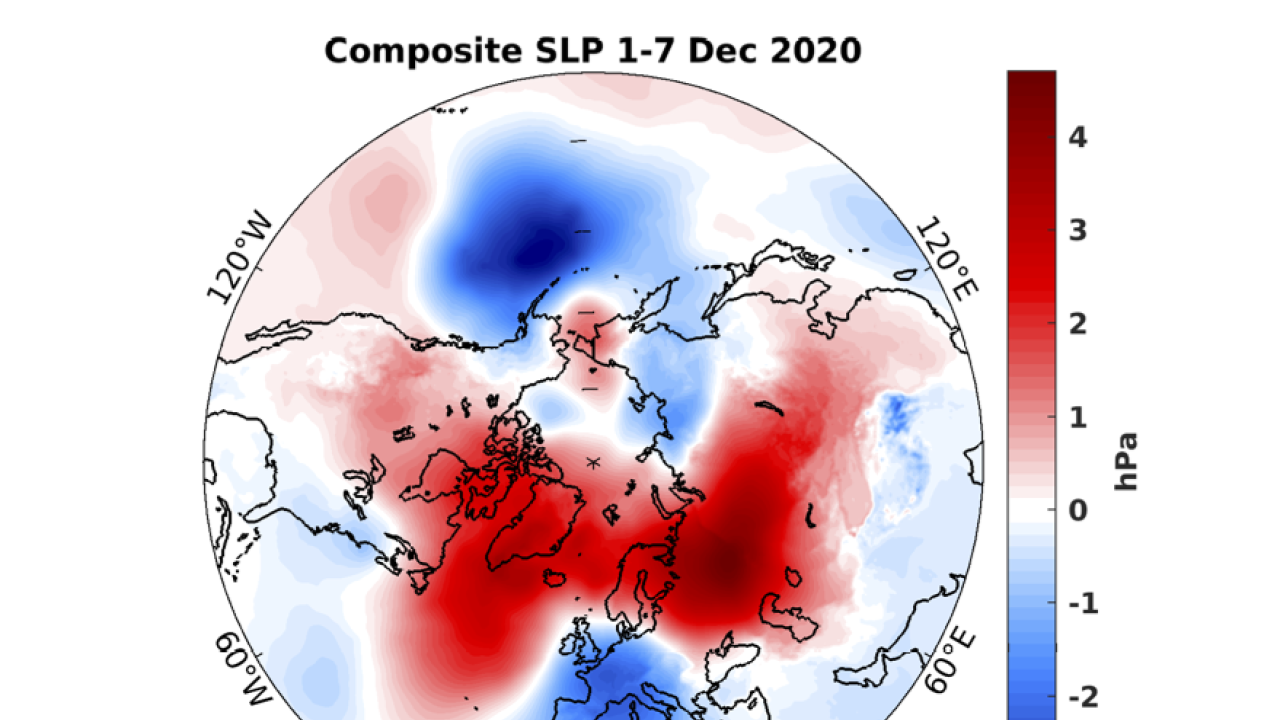
If you think the weather is extreme now, imagine what the 23rd century will be like if greenhouse gas emissions continue unabated. Climate modeling provides clues to how our planet's climate systems will change in that scenario. ICTP Postgraduate Diploma Programme alumni Mostafa Hamouda, class of 2017, is now doing his PhD at the Università di Milano Bicocca, and has published a new paper in Nature Climate Change outlining how a key planetary connection breaks down as Earth warms.
As the planet warms, seasons are becoming more variable. Each winter, the amount of snow and cold coming in Europe and North America is largely determined by two specific patterns in Earth's atmosphere. These two phenomena also affect summer temperatures, precipitation levels, storms, and sea levels, helping climatologists and meteorologists with long and short-term predictions. Known as the North Atlantic Oscillation (NAO) and the Arctic Oscillation (AO), these fluctuations between high and low air pressure near the surface of the Earth play a significant role in global climate patterns.
The two patterns often behave very similarly. "They are nearly 95% correlated" says Hamouda, "as they have one common driver, the mass of cold air over the North Pole, the stratospheric polar vortex." They behave so similarly that climatologists sometimes refer to them as the same thing. The strength of this connection led Hamouda and his colleagues, Claudia Pasquero of the Università di Milano Bicocca and Eli Tziperman of Harvard University, to examine what happens to the coupling of the AO and the NAO when the planet drastically warms.
Using a general circulation climate model developed at ICTP, called SPEEDY, as well as several other ocean and atmosphere models, the group looked at the scenario of unchecked emissions, with 8.5 degrees Celsius of warming, and zoomed forward to the 23rd century. "I used SPEEDY because I wanted to pinpoint the change in the connection," says Hamouda. "Many components of the climate have changed by the 23rd century- we wanted to figure out the causes of the connection."
The change was obvious: the models painted a picture of a world where the connection between the NAO and the AO broke down. "By then, the climate has warmed a lot, and the two oscillations have decoupled. They are only about 60% correlated by then." Under very different conditions on a warmer planet, these two key climate patterns behave quite differently, with unknown consequences.
When Hamouda investigated the mechanism behind this de-coupling, he found consistent differences between the amount of warming in the Atlantic and the Pacific Oceans. With a north-south circulation of water in the Atlantic that loses a lot of heat, the Pacific warms up much more than the Atlantic in this scenario, making the NAO and the AO decouple. "We went back to the models of today's climate and added the factor of Pacific warming," said Hamouda. "We got the same results as when we looked at the 23rd century scenario, a good confirmation."
In Europe right now, there is an ongoing stratospheric polar weakening, leading to a negative AO index and a negative NAO index. That means cold, dry winters, evident in daily forecasts all over the continent in this winter of 2020-2021. "It's a great case study, an illustration that is very consistent with the paper," says Hamouda.
"We didn't expect to see this robust decoupling," says Hamouda. "It's a great way to point out that with climate change, not only the averages of the patterns we know change, but also the patterns. The modes of climate variability are busy changing too." Right now, the NAO and the AO are important for explaining and predicting variability: "this paper is very timely, because a Sudden Stratospheric Warming event is going on right now, affecting the polar vortex, the NAO, and the AO," says Fred Kucharski, a scientist in the Centre's Earth System Physics Section and Hamouda's adviser during his time at ICTP. "I read through the paper and found it very interesting, I learned a lot."
A paper in Nature Climate Change is an impressive achievement for a young climate scientist, and Kucharski knows it will be a good push to keep quality of research at the highest level. "I am very proud of Mostafa," says Kucharski. "It's great to hear from recent Diploma alumni with such exciting news."
Hamouda will soon defend his PhD thesis and continue his work in climatology with a postdoctoral position in Frankfurt. He hopes that this paper will open the door to untangling the not-so-obvious connections between warming and climate patterns, exploring how climate change is reforming our planet.
----- Kelsey Calhoun
















